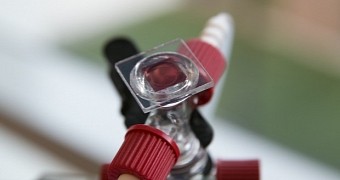You've probably heard of solar-powered batteries, or lithium-ion or lithium-polymer, or even lithium-iodine batteries, but how many of you have heard of aqueous flow batteries?
Aqueous flow batteries are nothing else but batteries that have water flowing through them filled with electrolytes that discharge 3.3 volts. However, researchers at Ohio State University have prepared aqueous flow batteries equipped with a solar battery as well. Tested against lithium-iodine batteries, they proved to be 20 percent more efficient.
The scientists are now pending a patent to develop such an aqueous flow solar-powered battery. The design consists of a solar panel and a battery crammed up in a single device. The 20 percent increase is made possible by the solar panel on top of the aqueous battery. After trying a solar-powered mesh at first, now the scientists are experimenting with a solid sheet.
More economical but still unfeasible
In the comparison tests between the two types of batteries, each one has been discharged 25 times while both of them discharged about 3.3 volts. The first differences appeared in the energy economy department.
The solar-powered aqueous flow battery took only 2.9 volts to be charged to discharge 3.3 volts, whereas the traditional battery took 3.6 volts to discharge the same power. When the two batteries had to be recharged, the solar-powered one marked a clear difference, leading to a energy conservation of 20 percent.
Following these tests, the researchers have concluded that the new design is indeed a more economical solution than any classical battery format.
However, there are doubts about its feasibility. Being a work in progress, it's still very much a possibility for this to be sorted out. It could, in theory, be compatible with the present day technology, being also an extremely eco-friendly energy solution.

 14 DAY TRIAL //
14 DAY TRIAL //